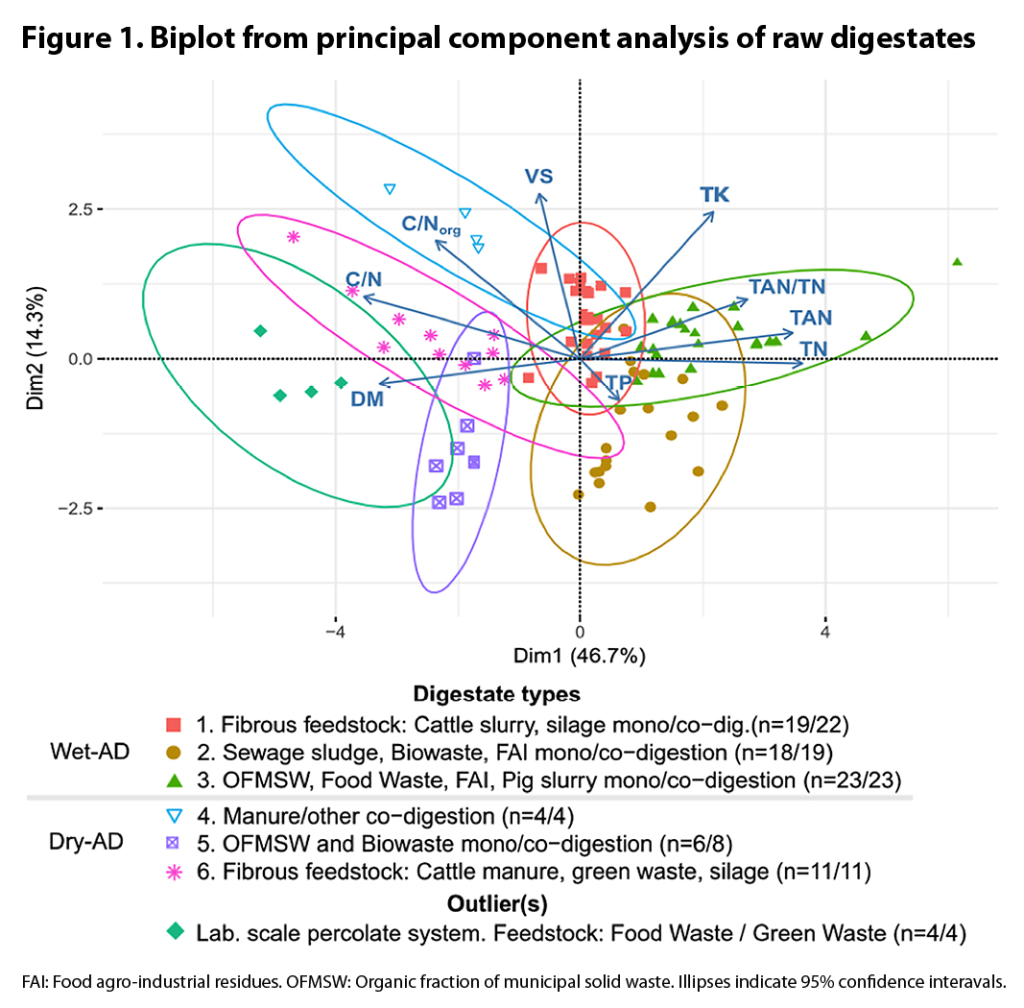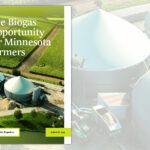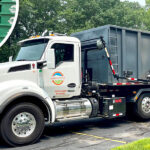 Sally Brown
Sally Brown
Anaerobic digestion (AD) is like the dream come true — you get the green energy and the soil amendment. I’ve been asked to talk about whether the material coming out of a digester — referred to as digestate — is as good for soils as compost or municipal biosolids (itself a digestate).
AD is a process that is very common in municipal wastewater treatment. It started as a way for the solids to meet regulatory requirements for pathogen destruction and volatile solids reduction. What that means in English is that the AD process — which involves specialized microbes feasting on the carbon coming into the digester — will eat pathogenic bugs in the process. They will also eat whatever else they are able to. By doing this, the material coming out of the digestion process will have a significantly reduced ability to rot and stink.
The material coming out of the digesters at wastewater plants is generally referred to as biosolids. Depending on where you live it may have also been given brand names like Bloom or Loop. If you read this column with any regularity you already know that I think of this material as black gold. I’ve also figured that digestate would have more in common with biosolids than any other type of soil amendment because it would have gone through a very similar process. To understand the basis of this assumption you have to understand a bit about the process.
AD Fundamentals
Anaerobic digestion at its most basic means eating without air. By comparison, humans eat with air. Carbon goes from gas form (carbon dioxide or CO2) to food form when electrons are added to it. That is photosynthesis, the only mechanism that I’m aware of that can do this. When we release those electrons we get energy (calories) but we need somewhere to put them. We use oxygen. The end products of this are water and CO2 and energy. This is your most efficient way to eat and uses up a significant portion of that fixed carbon.
Taking the oxygen away from eating complicates things. Eating becomes a multistep process that only select microbes are capable of carrying out. I went into detail about this process in an older Connections column, but I’ll summarize it here:
- The first step is hydrolysis where proteins are degraded to amino acids, complex carbohydrates turn into sugars, and lipids morph into glycerol or long chain fatty acids.
- Then comes fermentation. Here those amino acids release ammonia (NH3), hydrogen gas and CO2. They morph into acids, alcohols and other compounds. Same deal with the sugars and lipids but those have only a little nitrogen to start with and so no ammonia is released as they get chewed up.
- Final stage is methanogenesis. From this you get your natural gas (methane or CH4), some CO2, and the residual organics that couldn’t be broken down without the help of oxygen.
- The resulting material, digestate, will consist of the organic compounds (leftovers) and the ammonia released by the hydrolysis of proteins.
When you put wastewater solids into a digester, the poop, pee, food scraps and other materials that have entered the system have already begun to decompose on the trip to the plant. The big particles get screened out and landfilled. The heavier stuff goes straight to the digester. What remains is normally put through secondary aeration where aerobic microbes break down most of what remains. What goes into the digesters then are the dead microbes and the stuff from primary settling. It is critical to remember that this is a biological process and that if there is anything toxic in the process it will shut down. The bugs will die and methane production will stop. That also means that the solid residual from an active process is not toxic.
For codigestion systems, the food scraps or select types of food waste (i.e., fats, oils and grease or FOG) are added directly to digesters along with the dead bugs and primary materials (in wastewater plants) or animal manure and bedding (manure digesters). This adds fresh material to the digesters, gets the bugs excited and results in higher gas production. The excited bugs also do a better job of volatile solids reduction. If food scraps are digested alone, more methane is released per dry ton of material added because you are digesting stuff that hasn’t passed through a human or animal gut and then microbial guts first. However, the basic AD process will be the same. That means that the resulting solid material will also have more in common with other digestates than with composts or biochars.
Digestate Characteristics
I took a look at the literature to see if I was making stuff up or was in the ballpark. Table 1 compares characteristics of municipal biosolids and digestate made from cattle manure and cattle manure + onions (Iocoli, et al, 2019). The data suggests that they are all relatively similar.
 Guilayn et al (2019) analyzed characteristics of a wide range of digestates using their own data as well as data from the published literature. Figure 1 that I’ve copied from the paper looks a bit like a play diagram from some sport — not sure which. Different types of digestates have different colors and symbols. The circles around each group signify what is the same and what is different. There are also arrows pointing out with some letters near each. Those refer to a particular characteristic. If you care about nitrogen for example, you can see that the sewage sludge (aka biosolids), pig slurry, food scraps and organic fraction of solid waste are all relatively similar and much more nutrient rich than the digestate from fibrous feedstocks.
Guilayn et al (2019) analyzed characteristics of a wide range of digestates using their own data as well as data from the published literature. Figure 1 that I’ve copied from the paper looks a bit like a play diagram from some sport — not sure which. Different types of digestates have different colors and symbols. The circles around each group signify what is the same and what is different. There are also arrows pointing out with some letters near each. Those refer to a particular characteristic. If you care about nitrogen for example, you can see that the sewage sludge (aka biosolids), pig slurry, food scraps and organic fraction of solid waste are all relatively similar and much more nutrient rich than the digestate from fibrous feedstocks.
You have the same basic process here but with some differences in the end product. These differences are predictable based on what you are putting out for the bugs to eat. Here is what I mean:
- If your menu consists of higher carbon (C) to nitrogen (N) materials, your leftovers — or digestates — will have higher C:N ratios and a lower fertilizer value in general.
- If manures are on the table (without the bedding), you will have more nitrogen and more ammonia in the finished material.
- Adding an easily decomposable carbon source, like FOG or food scraps, will get the bugs excited and you will see a higher volatile solids reduction. That reduces the carbon so that the final material will have a lower C:N ratio and an increased fertilizer value.
- For all of these materials the organic nitrogen will be the primary type of nitrogen. This will mineralize over time and become plant available. The ammonia concentrations will be pretty high, depending on your feedstocks. This will be an immediately available source of fertility. For all of these digestates, the nitrate concentration will be very low. Nitrates are formed from ammonia by microbes that need oxygen and there isn’t a lot of that around in a digester.
Still On A Learning Curve
Digestates are relatively new products and we have to learn how to use them properly. A high ammonia concentration means lots of nitrogen that is immediately available. It also means you likely want to wait a few days before you plant the seeds in it. High ammonia can hurt seedlings. The soil isn’t toxic — you just have to allow some time for that ammonia to be transformed to nitrate. The soil microbes will do it if you give them a chance. One study looked at earthworm populations and weights one and two years after different types of digestates had been added (Rollett et al., 2020). They tested grasslands and croplands. Some worms liked the food-based digestates; others preferred the animal slurry. In some of the fields, they liked them all about the same, including the green compost and green/food compost. Iocoli, et al (2019) grew lettuce in pots amended with different digestates. You got much bigger salads from the fertilizer treated pots than the control (soil). Cattle digestate was just about in the middle but the cattle + onion digestate grew as much lettuce as the fertilizer (Figure 2).
 To sum it up, digestates are a welcome addition to our organic amendment portfolio. Each one will be a little different but these differences are not mysterious. No secret ingredients here. Anaerobic digestion is a well-known process that has its optimal function/output with relatively fixed parameters. No one wants a digester to sour. That means material coming out of a well-functioning digester will be more the “same as” than different from other digestates. That category includes biosolids — a digestate that has been studied to death.
To sum it up, digestates are a welcome addition to our organic amendment portfolio. Each one will be a little different but these differences are not mysterious. No secret ingredients here. Anaerobic digestion is a well-known process that has its optimal function/output with relatively fixed parameters. No one wants a digester to sour. That means material coming out of a well-functioning digester will be more the “same as” than different from other digestates. That category includes biosolids — a digestate that has been studied to death.
An easy way to think of this is in relation to chocolate. Biosolids are often referred to as cake and what better type of cake is there than the chocolate kind. Forrest Gump said, “Life is like a box of chocolates. You never know what you’re gonna get.” I would argue that the difference between milk and dark chocolate is a whole lot less (i.e., you know what you are gonna get, more or less) than the difference between chocolate and peppermints.
 As illustrated in Figure 3, some of the digestates would fall into my milk chocolate classification — the ones high in fibrous feedstocks. Lots of sugar and only a little bit of the punch. My preference here is for the ones that I associate with dark chocolate. That would include manures, biosolids and codigestion, all much richer in this case, meaning higher in nitrogen and other nutrients. It may be that the food scrap only digestate qualifies as bitter chocolate — hard to eat on its own but an invaluable ingredient for many recipes. Mix in a higher rate of soil (aka sugar) and you get a blend that plants will love. In the same way so many of us need and crave chocolates, I would also argue that soils and plants need and crave their digestates. We just have to learn the best way to use the digestates to satisfy that desire.
As illustrated in Figure 3, some of the digestates would fall into my milk chocolate classification — the ones high in fibrous feedstocks. Lots of sugar and only a little bit of the punch. My preference here is for the ones that I associate with dark chocolate. That would include manures, biosolids and codigestion, all much richer in this case, meaning higher in nitrogen and other nutrients. It may be that the food scrap only digestate qualifies as bitter chocolate — hard to eat on its own but an invaluable ingredient for many recipes. Mix in a higher rate of soil (aka sugar) and you get a blend that plants will love. In the same way so many of us need and crave chocolates, I would also argue that soils and plants need and crave their digestates. We just have to learn the best way to use the digestates to satisfy that desire.
Sally Brown, BioCycle’s Senior Adviser, is a Research Professor at the University of Washington in the College of the Environment.













